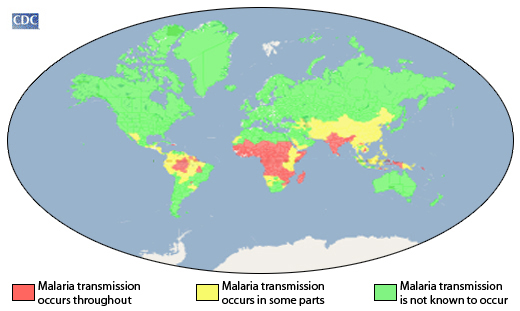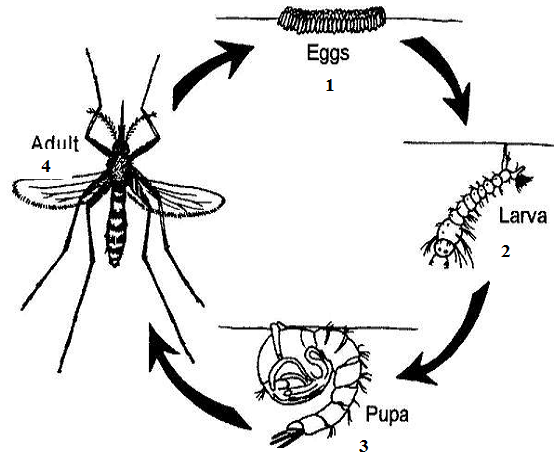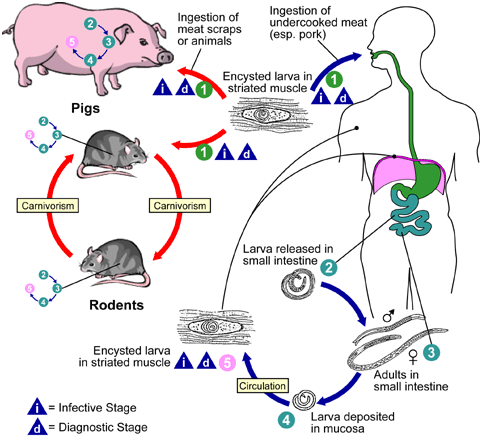Malaria is increasing at a worrying rate compared to the other blood and tissue parasitic infections. According to the World Health Organization (WHO), malaria accounts for one of the most causes of death due to infectious diseases worldwide, and the malady affects an estimated 350 million people around the globe with over a million people dying from the disease yearly. The disease has been in different phases of control, elimination, pre-elimination and prevention of a reintroduction.
Some regions of the world have been certified malaria free and have no transmission of the disease for over a decade. But in other regions, especially in Africa, malaria infection is still persistent, and several control and preventive measures for the disease are currently ongoing in order to put the region on the part of some countries that have sustainable localized malaria-free projects, and are fast achieving a pre-elimination and total elimination of the disease in their countries (China, Yemen, Philippines, Solomon Island, Vanuatu and Sudan).
Though there still abound several effective therapy, prevention and control measures for malaria infection in Africa and some parts of Asia, the disease still remains an important human infection whose total cure and possible vaccine development is yet to be achieved in order to put the continents on the path of other countries that are already malaria-free. Epidemiologically, the Plasmodium parasite and its insect vector (female anopheles mosquito) that help in transmitting it to susceptible human host live predominantly in the subtropical and tropical regions of the world (Africa and Asia).
The disease has also been reported in southern America where there abound abundant mosquito habitat, while there has been very little of no cases from the North American region. Wet-low lying areas are good breeding sites for the female Anopheles mosquito that helps in transmitting this human dreaded disease. About 40 % of the world’s population lives in malarious countries with about 90 % of malaria infections occurring in the subtropics and tropical parts of the world especially in the sub-Saharan Africa.
However, major regions in Asia, Oceania, the Caribbean’s and the Americas (South and Central parts) are also affected by the disease. Also, it has been estimated that the disease kills about one million people annually including children who are under the age of five (5) years. Figure 1 shows the geographical distribution of malaria infection across the globe as elucidate by the Division of Parasitic Diseases of the U.S. Center for Disease Control and Prevention (CDC).
Malaria is usually limited to the tropical and subtropical countries of the world (as shown in the map above). However, increased globalization coupled with the prevalent global/climatic changes on earth has made the infection to be reported in some non-tropical parts of the world though in limited cases. Malaria has been regarded as a disease of poverty, poor hygiene, sanitation and malnutrition in some quarters; but the primary route or source of the disease is through the bite of an infected female Anopheles mosquito which usually breeds and thrives in dirty environments.

Generally, malaria disease is not a disease of temperate regions but rather a disease that is associated with wet low-lying areas (the tropics and subtropical countries) where the female anopheles mosquito that primarily harbours the Plasmodium parasite can breed. Such habitat or environmental conditions (ambient temperatures of about 30oC and very high humidity) provide the best conditions for the insect vector of the parasite to thrive, and this also aids the transmission of the disease too.
Nevertheless, malaria has been reported in some areas such as the USA, UK and even Turkey where both the disease and insect vector was previously cleared. Malaria in such places is usually due to the exposure of non-immune individuals or populations; and when it occurs the malady can be easily controlled unlike in the tropical and subtropical countries where control is still arcane. Also, malaria infection in areas such as the USA which are known to be very low in terms of endemicity of the disease are usually due to imported infections from travelers, soldiers or tourists returning from high endemic areas.
The rapid development of resistance by the Plasmodium parasite to some readily available drugs and the breakdown in some control programs has allowed the parasite and the disease to continue in its menace almost unperturbed. Lack of resources in developing nations to contain the situation, poor and slow research and development for a malaria vaccine and possibly total cure, war that have led to the displacement of people from low endemic areas to high endemic areas, malnutrition and environmental changes has further compounded the malaria scourge worldwide. Till date, sub-Saharan Africa (for example Nigeria) still accounts for over 90% of the global malaria cases.
The transmission of malaria can either be:
- Endemic: This occurs when there is a constant occurrence of malaria cases and transmission within a given population over a successive time period.
- Epidemic: Malaria becomes epidemic when there is a sharp increase in the incidence of the disease in an endemic area or in a population in which the disease was previously known to occur.
- Accidental: Accidental malaria infection occurs when the Plasmodium parasite becomes transmitted congenitally from mother to child through the placenta. This type of malaria episode can also occur during blood transfusion or organ transplant.
- Imported: Imported malaria occurs when the infection was acquired outside a particular area (usually one that is immune or free from the disease). Imported malaria is usually stimulated following the increased globalization and air travels that allow people to inter-phase between malaria-prone areas and non-endemic malaria populations.
References
Aschengrau A and Seage G.R (2013). Essentials of Epidemiology in Public Health. Third edition. Jones and Bartleh Learning,
Beers M.H., Porter R.S., Jones T.V., Kaplan J.L and Berkwits M (2006). The Merck Manual of Diagnosis and Therapy. Eighteenth edition. Merck & Co., Inc, USA.
Chiodini P.L., Moody A.H., Manser D.W (2001). Atlas of medical helminthology and protozoology. 4th ed. Edinburgh: Churchill Livingstone.
Dictionary of Microbiology and Molecular Biology, 3rd Edition. Paul Singleton and Diana Sainsbury. 2006, John Wiley & Sons Ltd. Canada.
Ghosh S (2013). Paniker’s Textbook of Medical Parasitology. Seventh edition. Jaypee Brothers Medical Publishers,
Gillespie S.H and Pearson R.D (2001). Principles and Practice of Clinical Parasitology. John Wiley and Sons Ltd. West Sussex, England.
Gordis L (2013). Epidemiology. Fifth edition. Saunders Publishers, USA.
John D and Petri W.A Jr (2013). Markell and Voge’s Medical Parasitology. Ninth edition.
Kumar V, Abbas A.K, Fausto N and Aster A (2009). Robbins and Cotran Pathologic Basis of Disease. 8th edition. W.B. Saunders Co, USA.
Lee JW (2005). Public health is a social issue. Lancet. 365:1005-6.
Leventhal R and Cheadle R.F (2013). Medical Parasitology. Fifth edition. F.A. Davis Publishers,
Lucas A.O and Gilles H.M (2003). Short Textbook of Public Health Medicine for the tropics. Fourth edition. Hodder Arnold Publication, UK.
MacMahon B., Trichopoulos D (1996). Epidemiology Principles and Methods. 2nd ed. Boston, MA: Little, Brown and Company. USA.
Mandell G.L., Bennett J.E and Dolin R (2000). Principles and practice of infectious diseases, 5th edition. New York: Churchill Livingstone.
Molyneux, D.H., D.R. Hopkins, and N. Zagaria (2004) Disease eradication, elimination and control: the need for accurate and consistent usage. Trends Parasitol, 20(8):347-51.
Nelson K.E and Williams C (2013). Infectious Disease Epidemiology: Theory and Practice. Third edition. Jones and Bartleh Learning
Roberts L, Janovy J (Jr) and Nadler S (2012). Foundations of Parasitology. Ninth edition. McGraw-Hill Publishers, USA.
Schneider M.J (2011). Introduction to Public Health. Third edition. Jones and Bartlett Publishers, Sudbury, Massachusetts, USA.
Discover more from Microbiology Class
Subscribe to get the latest posts sent to your email.




